Last week I came across a box of Max Orido’s Magical Fuse in one of the blog items of the AE86 Black Limited in the AE86 Wall of Shame. I had never heard of this product, but the name intrigued me very much. Max Orido is a well-known name in the AE86, 86 and GR86 scenes and he must know what’s good and what’s not. But magical sounds too good to be true! So is Max Orido’s Magical Fuse just a snake oil scam or is it really that wonder product that he claims it is?
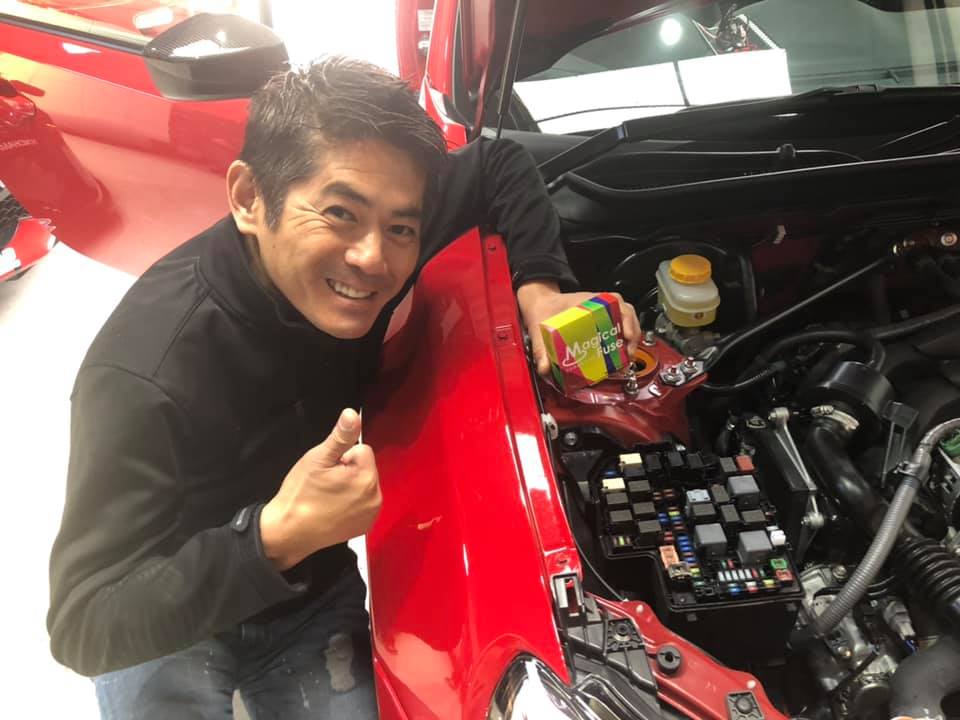
What is Max Orido’s Magical Fuse?
Let’s begin with what it is. Max Orido didn’t create the Magical Fuse himself. A company called Magicalfuse was the one who developed and created them. Orido just sells them in his shop. The Magical Fusebox is nothing else but a box full of fuses. And this box costs well over 130 dollars. Yes, really! Those fuses are expensive! But why?

According to Mr. Tanahashi, the creator of the Magical Fuse and CEO of Magic Fuse Co. Ltd., “some fuses discharge electricity and contain noise”. He claims these fuses will remove any electrical resistance and interference. Therefore your ECU will perform better and you get a better spark. Hence it improves the performance of your engine.
Let’s watch the video
So let’s watch the video first. The claims are around 19:30 in the video.
In a nutshell, Keiichi Tsuchiya’s AE86 gets its fuses replaced by these magical fuses and also the battery gets replaced with a lithium-ion battery. They perform a dyno before and after the change. The dyno tells us Keiichi’s AE86 had 207hp before and 214hp after the fuse swap. The battery swap gives an additional 1hp, but this shouldn’t be counted as reliable. Also, I’m keeping the battery swap out of scope here as those claims turn out to be marginal and it is also a weight-saving measure.
What are electrical fuses?
A fuse is an electrical component that protects your electrical systems from overloading. The fuse contains a metal wire with a specific resistance. These metal wires are generally made of zinc, copper, silver, aluminium or alloys of these metals. When electricity flows through the system, this wire is supposed to heat up. At a very specific temperature, this wire is set to melt. Once the wire has melted, it no longer allows electricity to flow through the fuse and this is what people call a blown fuse.
If a fuse needs to be able to let a higher current through, the wire inside the fuse should have a lower resistance. The reason for this is that for a wire with a lower resistance, the wire will heat up at a later stage and thus take longer to melt. In other words, the ratings of fuses are inversely connected to the amount of resistance the wire inside a fuse creates.
How do they protect electrical systems?
Imagine the fuse to be rated to, for instance, 10 amps of current. This means the fuse is allowed to let 10 amps of current through without overheating, but once it reaches 10 amps the wire will melt and the fuse will effectively blow. This will protect the electrical circuit from drawing more current than intended. The reason for drawing more current could be a short circuit that could draw almost an infinite amount of power. Naturally, we would like to prevent causing a fire due to a short circuit and hence we install a fuse.
If a circuit is supposed to draw 7.5 amps of current, we simply can’t secure it with a 7.5 amp fuse because it will blow immediately once the circuit is used nominally. The rule of thumb is that a fuse is supposed to be used for 75% of its rating. Because of this, generally, electrical systems rated for 7.5 amps will be secured by a 10 amp fuse. If you install a fuse with a too-high rating, for instance, a 15 amp fuse, the fuse will no longer protect the circuit because now it allows twice the amount of current to go through. In other words, if the amount of resistance of the wire inside the fuse is too low, it no longer protects your electrical circuits.
Now you should know the most important things about fuses, so how does this relate to the Max Orido Magical Fuses?
Magical Fuses received with scepticism
As the heading of this paragraph tells you, I have a few issues with the video and the claims Orido and Mr. Tanahashi make. Most of them have to do with the foundations of their claims, but also with the method of testing and the lack of verification.
Issue #1: Methodology, only a single dyno run
First of all, there was only a single dyno run performed before the swap. Normally you do two or three dyno runs to see if you get consistent results. The same accounts for the other two dyno runs. Those were single runs and we have no way of knowing whether these runs are consistent.
Issue #2: Methodology, they didn’t replace old fuses with new ones
Secondly, they claim old fuses decrease performance. They state the gains for a new 86 are much lower than with Keiichi’s AE86 because the 86 fuses were less old. However, they didn’t swap Keiichi’s fuses for a set of new high-quality fuses that you can buy for 30 to 40 dollars on every street corner. Let’s suppose they are right and old fuses are bad for the performance of your car. Then swapping them out for a set of new fuses could have given, let’s say, a 5hp or 6hp gain for his car. So is the added 1hp then worth the extra 80 dollars?
Issue #3: electrical bullshit claims
Thirdly, I have an issue with the claim that this product removes electrical discharge and electrical noise. You usually remove electrical interference by adding so-called filters and/or shielding. These filters consist of capacitors and resistors. The magical fuses don’t have these in them. Shielding is done so you don’t get interference from other wires, but they’re not claiming they’re using shielding either. Also, fuses are supposed to have resistance, so they will break if you draw too much current. If, as Mr. Tanahashi claims, a ordinary fuse’s resistance would increase due to aging, it would simply blow on a nominal load and you would have to replace it.
Also if a Magical Fuse had a lower resistance, it would simply not break at the correct current and thus they wouldn’t protect your car. Fuses are inherently meant to break and protect. They don’t talk about this issue and they certainly don’t comfort anyone by stating these fuses stay within specification of breaking at the correct current. It’s not comforting to me that you just swap out fuses with a lower resistance knowing it could harm your car!
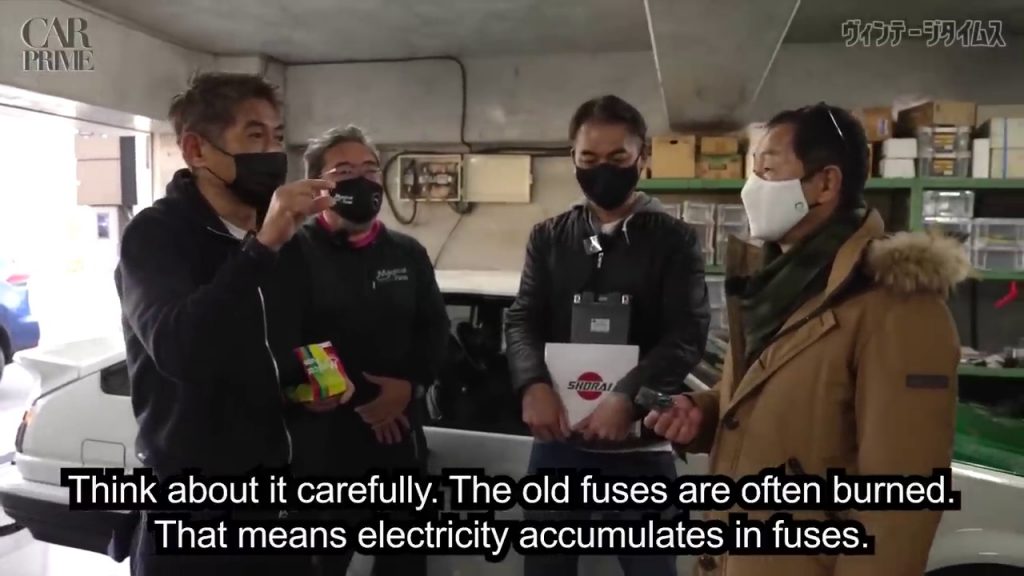
Max Orido goes even so far that he claims old fuses often are burned. If old fused would have burned, they simply don’t work anymore! We can quickly discard this statement to the pile of BS.
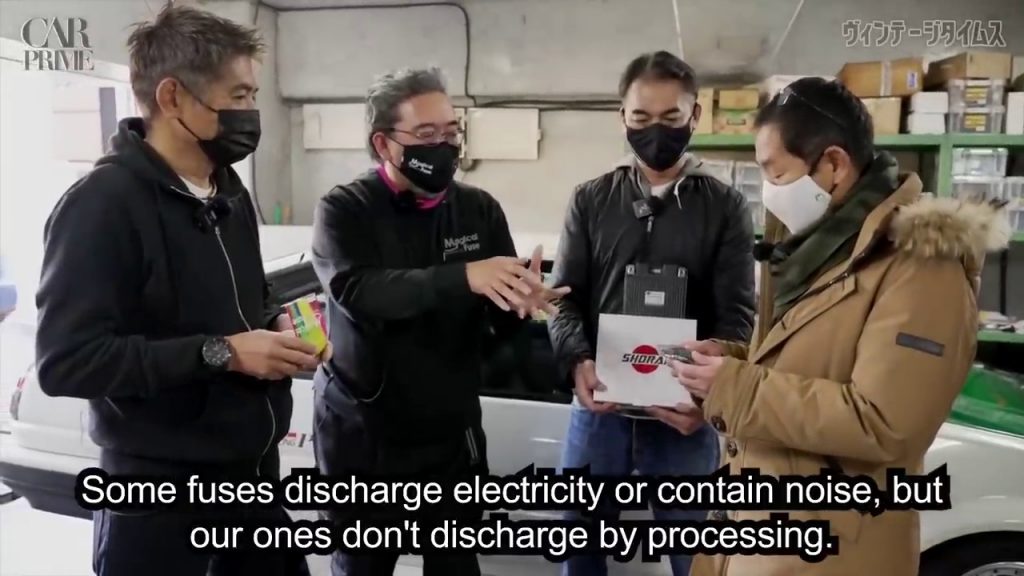
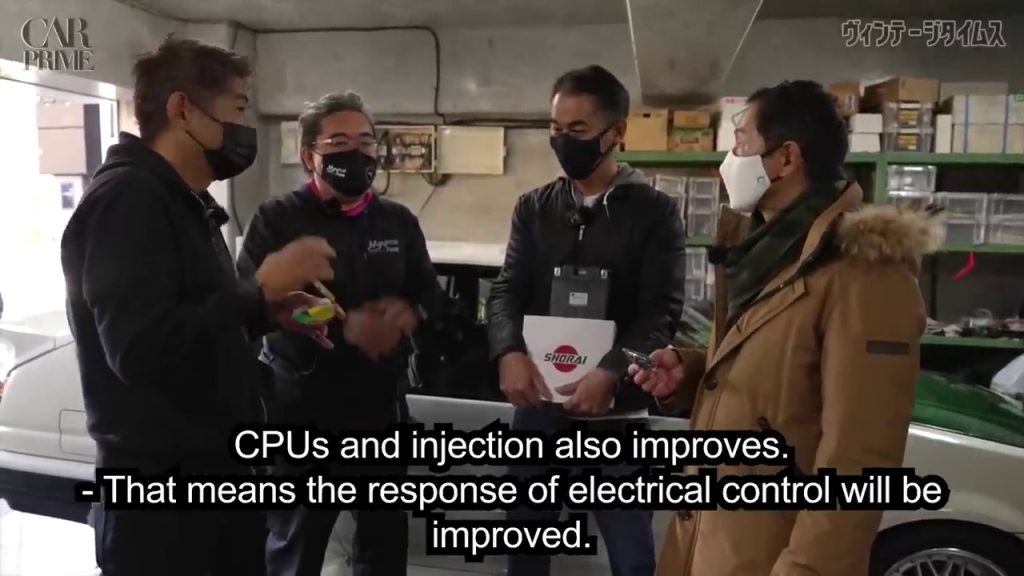
If there was electrical noise between the sensors and the ECU, this would not be cancelled out by these fuses. Sensors are directly connected to the ECU, so these fuses will not help. You may argue they cancel out electrical noise as input voltage to the ECU. ECUs need a stable voltage to do their job properly. This means any ECU will have its own voltage regulators that cancel out any noise.
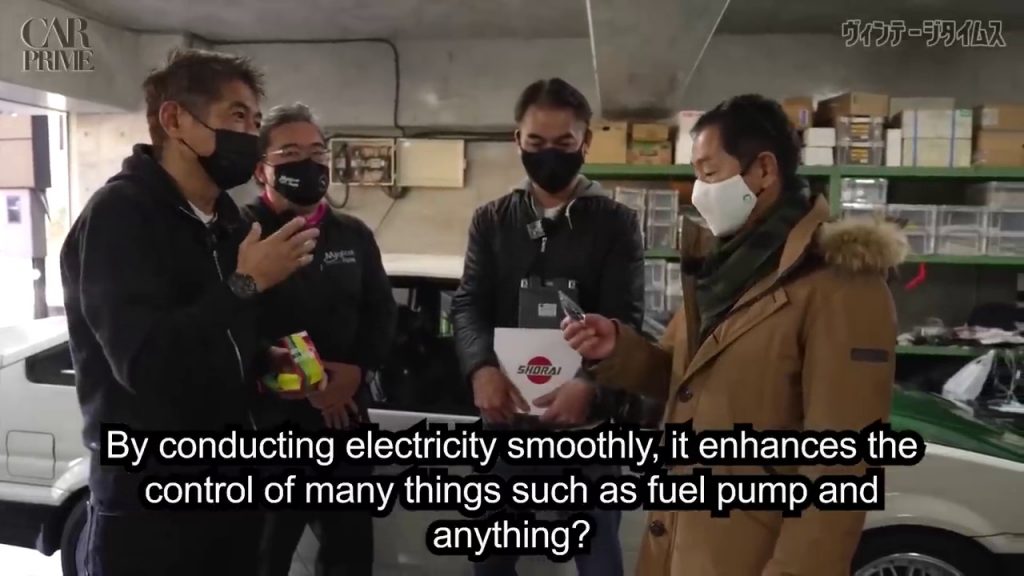
A final point you could make is that it decreases the resistance, increases the voltage and thus improves the fuel flow of the fuel pump. If this was the case, Keiichi Tsuchiya’s engine would have been suffering from fuel starvation on the top end. As we have seen in the dyno, the increase is over the entire rpm range. Also, a simple fuel pump upgrade would have been sufficient to solve that problem and not replace the fuses.
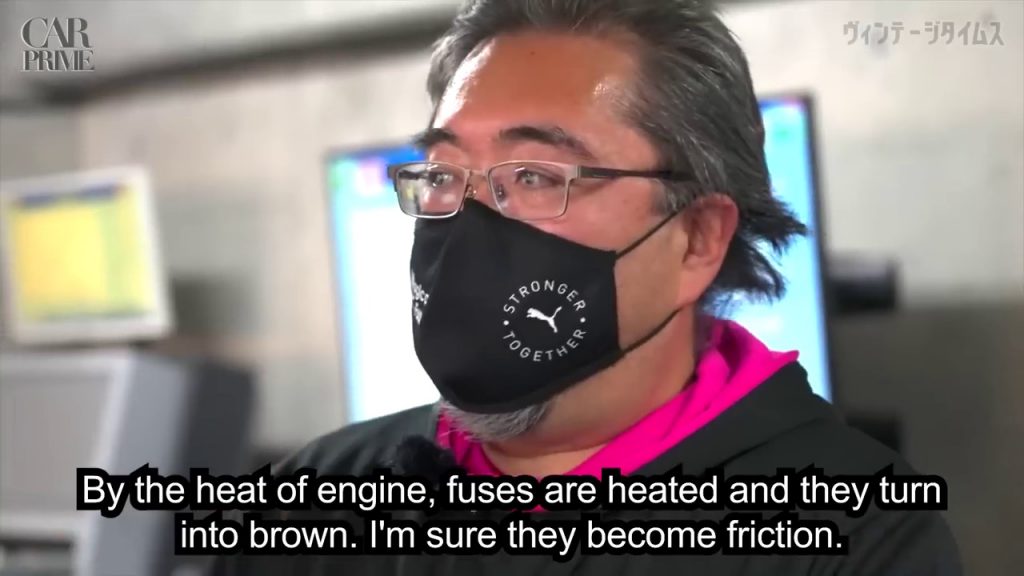
Mr. Tanahashi also claims fuses are deteriorating due to engine heat. Fuses are placed inside a fuse box as far away from the engine as possible. Fuses are supposed to melt at temperatures exceeding the melting point of the plastic fuse box. Also if resistance (he calls it friction) is (significantly) increased, the fuse’s maximum capacity would decrease. This means the fuse would blow during nominal loads. Again, resistance in an electrical system due to a fuse isn’t a bad thing. It will not cause any problems for your electrical systems.
Then I have this description that is taken from the Magical Fuse website:
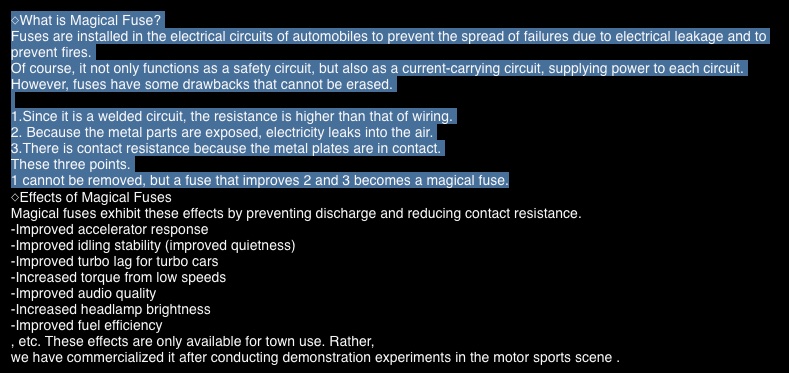
According to the description above, ordinary fuses leak electricity to the air and because it has to be inserted into a socket there is electrical resistance. The Magic Fuse doesn’t leak electricity to the air and doesn’t have electrical resistance when inserted into a socket.
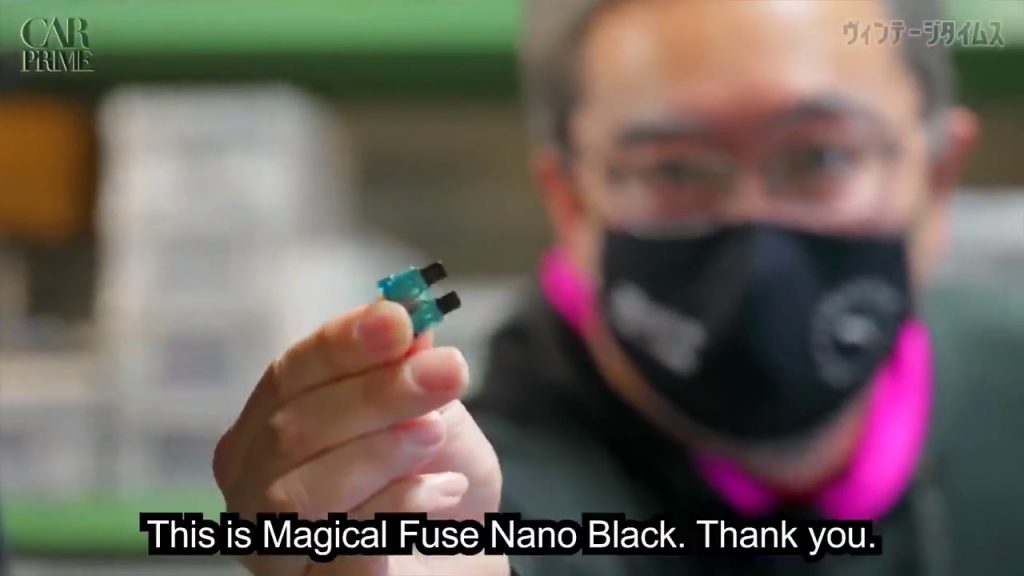
This even makes less sense than what they claim in the video! Electricity doesn’t leak into the air. Electricity chooses the path of least resistance, which will always be the fuse and contact points. If the contact between the fuse and the fuse socket is the ones to blame, they simply won’t solve the issue as they only replace the fuse and not the sockets. However, it does clear up what these fuses actually are: just ordinary fuses with some really expensive plating on the contact points. Probably this is also where the Nano Black name is derived from.
Issue #4: making subjective claims
Finally, I have the issue that Orido didn’t develop/create or produce these fuses himself. Yet still he attaches his name to them to make them sell better. Tsuchiya appears to be the outsider here as he doesn’t sell these fuses himself. However, he plays the customer here who is completely baffled by the outcome.


Tsuchiya claims he can feel the difference between before and after. But remember, this is a 6hp to 7hp increase. Torque is increased from 180Nm to 185.6Nm. Both power and torque translate to an increase of only 3%! However, your butt will not feel the difference of 3%! Not even if your name is Keiichi Tsuchiya. Feeling the difference of 3% is utter BS!
Apart from this, both feeling more torque and finding the engine sound much clearer are subjective findings. They differ from person to person. If Tsuchiya has the opinion there is more torque, you may not be the person who shares that opinion that. If Orido says he thinks the sound of the engine is clearer, you may not be the person who thinks the same. This is the exact reason why a dyno was invented: to rule out any subjectivity and prove with cold facts which is more powerful. But even this isn’t holy for Orido…

Orido even goes as far as claiming you can feel more than statistical data actually proves. In other words: he suggests statistical data is unreliable while your gut feeling is what matters. This makes it much easier for him to eliminate claims from anyone in the future who didn’t get an improvement on the dyno: if you feel it improved torque, then it must be true! Trust your heart! You just spent 130 dollars (ex shipping) on a set of fuses, of course, your heart feels you need results! Of course, you will feel an improvement if your wallet is in pain!
The snake oil salesman scheme
If you’re unfamiliar with the snake oil salesman scheme, it’s someone selling a miracle product that will solve and cure everything. In the late 1800s, these snake oil salesmen would perform on stage, show a miracle cure and make all sorts of unfounded claims. I could go into more detail, but this video will explain it much better:
To me, this whole piece of theatre by Orido and Tsuchiya feels like a snake oil salesman scheme and his accomplice chosen “randomly” from the audience.

The accomplice is sceptical and doubts the working of the snake oil. However, in the end, he is surprised by the results. This will convince most people in the audience that snake oil is a miracle cure!

My verdict
Based on the scepticism above, I find it difficult to believe the claims that Orido and Tsuchiya make. If old fuses are bad for the performance of your car, then swapping out 10-year-old fuses with any ordinary set would give all our cars instant boosts in power. Also, Keiichi’s AE86 was fully rebuilt in 2002, so his fuses shouldn’t be older than 20 years. It really disappoints me these two heroes let themselves in with a snake oil scheme and abuse the trust and respect they have from their own audience. I really have high regard for both of them, but this puts a big dent in my faith in them.
You may wonder why I’m making such a fuss about all this. It’s only a set of fuses that cost 130 dollars without shipping from Japan. The reason that I make a fuss about this, is that I can almost only find false information about this product. I simply can’t accept that people are getting scammed.
How much I would like to believe the claims, I simply can’t. However, I could be wrong and this could all be true. Do you have any experience with these fuses? I dare you to share your experience and prove me wrong!
All screenshots are taken from Car Prime’s video, except for the Magic Fuse product photo and Max Orido posing next to them. Those two photos are taken from the Magic Fuse store.

Leave a Reply